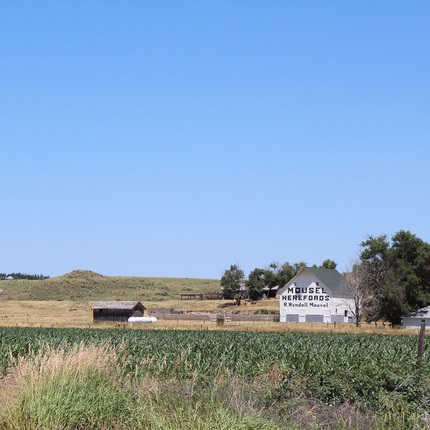By Lucas Nelsen, former staff member
Energy costs frequently make up a substantial portion of the monthly expenses for small businesses. This is especially true in rural areas, where energy—the percentage of income spent on energy—is on average higher than in urban areas.
There are several ways to offset this energy burden, including improved energy efficiency or investing in renewable energy to meet the needs of small businesses. While these solutions may relieve energy burden for rural consumers in the long-term, it is often difficult for many to make the upfront investment required.
One tool rural small businesses and agricultural producers can access to assist them with investments in energy efficiency and renewable energy is the Rural Energy for America Program (REAP) through the U.S. Department of Agriculture (USDA).
“REAP was created to provide financial assistance to rural small businesses and agricultural producers for such improvements,” said to Jeff Carpenter, energy coordinator with USDA Rural Development in Nebraska,
REAP offers guaranteed loans up to 75% of the total eligible project cost for energy efficiency improvements and renewable energy grants up to 25% of the total eligible project cost, as well as a combination of loans and grants that can cover up to 75% of the total cost.
Some common examples of energy efficiency projects include the replacement of grain dryers, irrigation motor conversion, upgrades to LED lighting, or the replacement of coolers and freezers in grocery stores.
“We sought to prioritize the grocery industry because it was important to support grocery stores in rural areas,” Carpenter said.
He also noted solar was the most common type of energy generation among REAP applicants in Nebraska, but the program can also support wind, geothermal, hydropower, hydrogen, and biomass such as biodiesel, ethanol, and anaerobic digesters.
Since the program’s inception in 2003, REAP has been regularly used by agricultural producers and rural business owners to assist them in making qualifying energy investments, especially in the Midwest.
“The Midwest has received significant investments from the program. Nebraska historically has been in the top five for number of applications received, with an average of about 72 projects a year receiving funding” Carpenter said. “While historically there has been a heavier focus on using REAP for energy efficiency projects, there has been a significant growth in solar largely driven by federal tax credits and other incentives”.
In terms of information that potential applicants should know, Carpenter voiced that he hoped more people could be made aware of the program.
“We often get calls after people have completed projects,” he said. ‘It’s a great opportunity for people to invest in their operations, reduce their energy usage, and free up money for other investments. Like anything new it can be a little overwhelming, but we’re here to help.”
Click here to learn more about USDA REAP or contact your state’s USDA Rural Development office.





